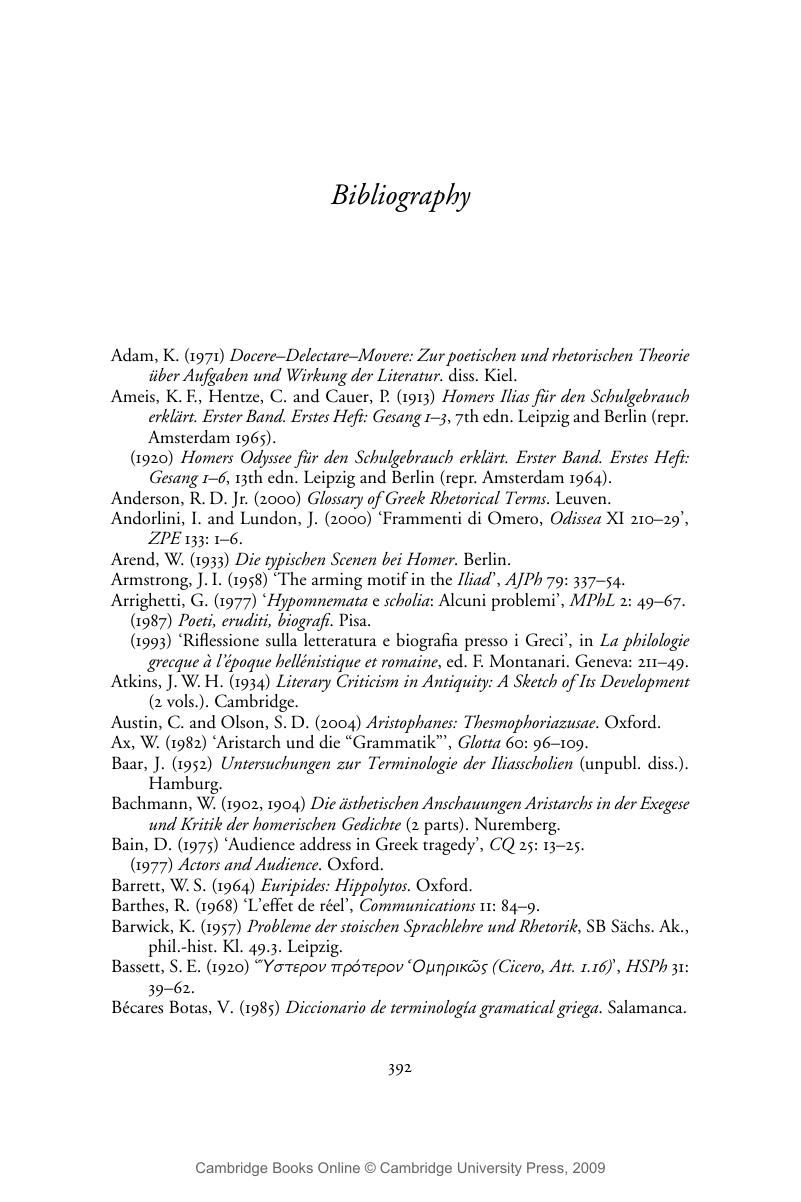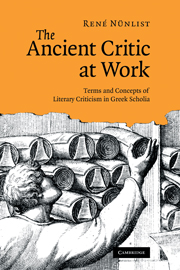Bibliography
Published online by Cambridge University Press: 29 August 2009
Summary

- Type
- Chapter
- Information
- The Ancient Critic at WorkTerms and Concepts of Literary Criticism in Greek Scholia, pp. 392 - 406Publisher: Cambridge University PressPrint publication year: 2009



